Five Years Later: Technology and Advising Redesign at Early Adopter Colleges
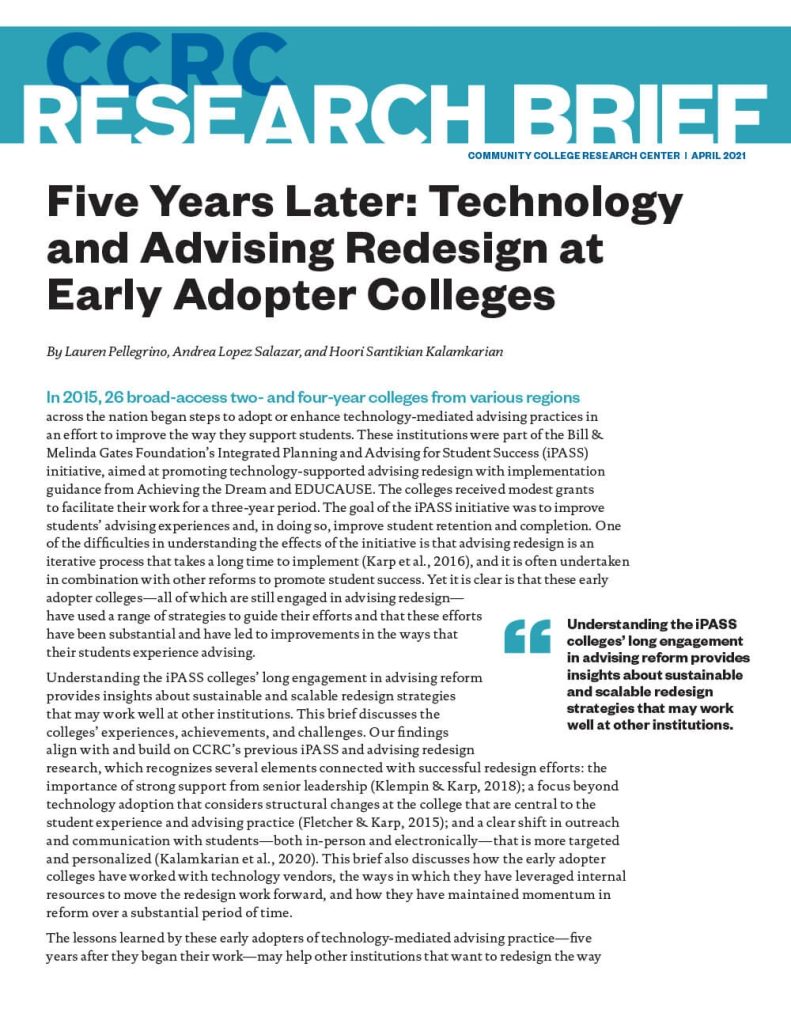
This brief discusses the experiences, achievements, and challenges of 26 broad-access two- and four-year colleges that, in 2015, began steps to adopt or enhance technology-mediated advising practices to improve the way they support students.
Strengthening Community College Workforce Training
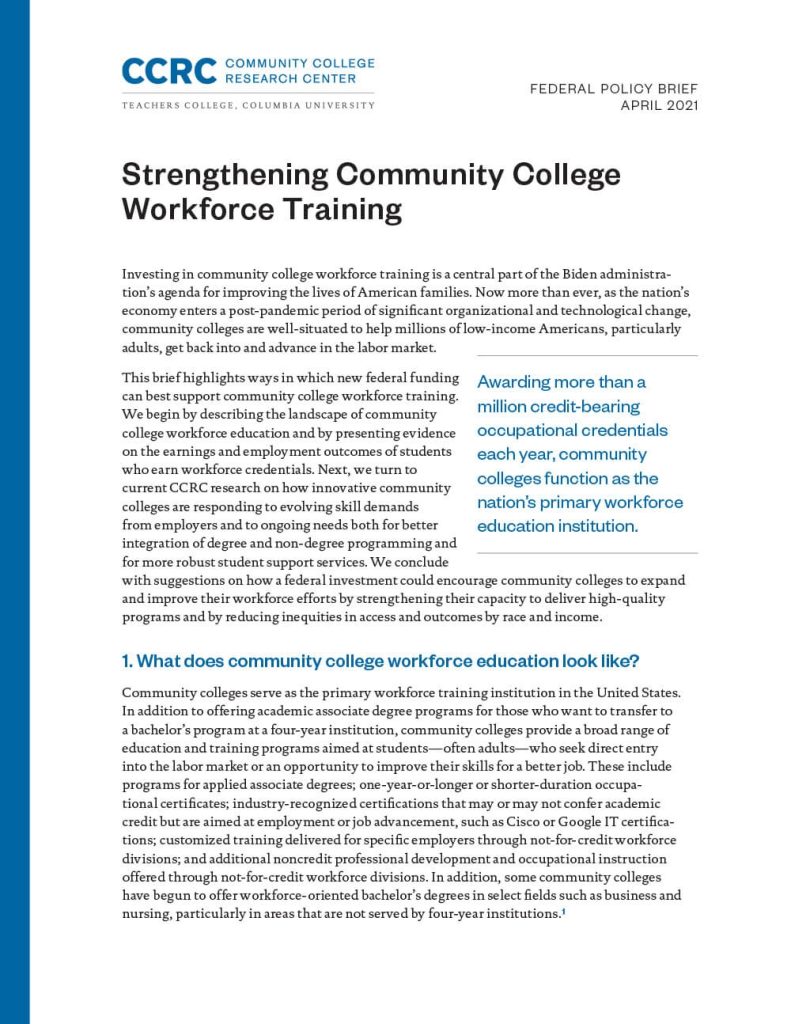
This brief describes the substantial role community colleges play in workforce education, what innovative colleges are doing to improve programming and labor market outcomes for participants, and how the federal government can support these efforts.
Caring Campus: An Initiative to Involve Community College Staff in Increasing Student Success
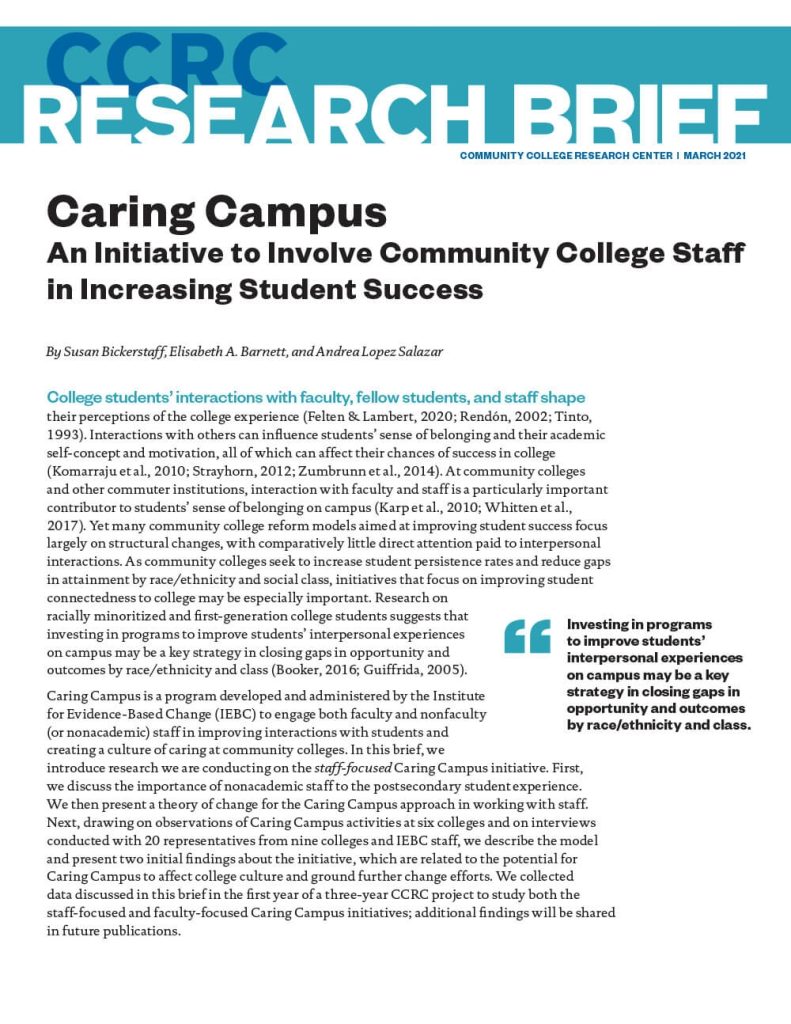
This brief describes the importance of nonacademic staff to the student experience and presents initial findings related to the Caring Campus initiative’s capacity to affect college culture and ground further change efforts.
Can Dual Enrollment Algebra Reduce Racial/Ethnic Gaps in Early STEM Outcomes? Evidence From Florida
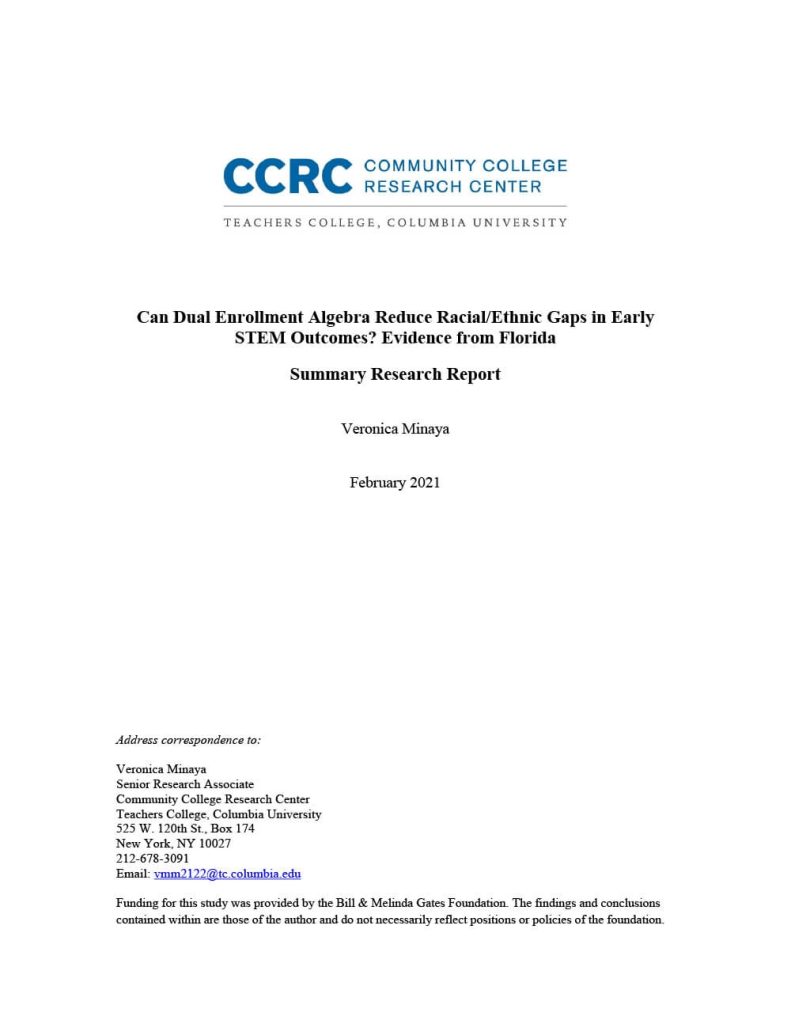
Using descriptive methods as well as a quasi-experimental approach, this report examines the early college outcomes of Florida high school students who enrolled in a dual enrollment college algebra course.
Implementing and Scaling Multiple Measures Assessment in the Context of COVID-19
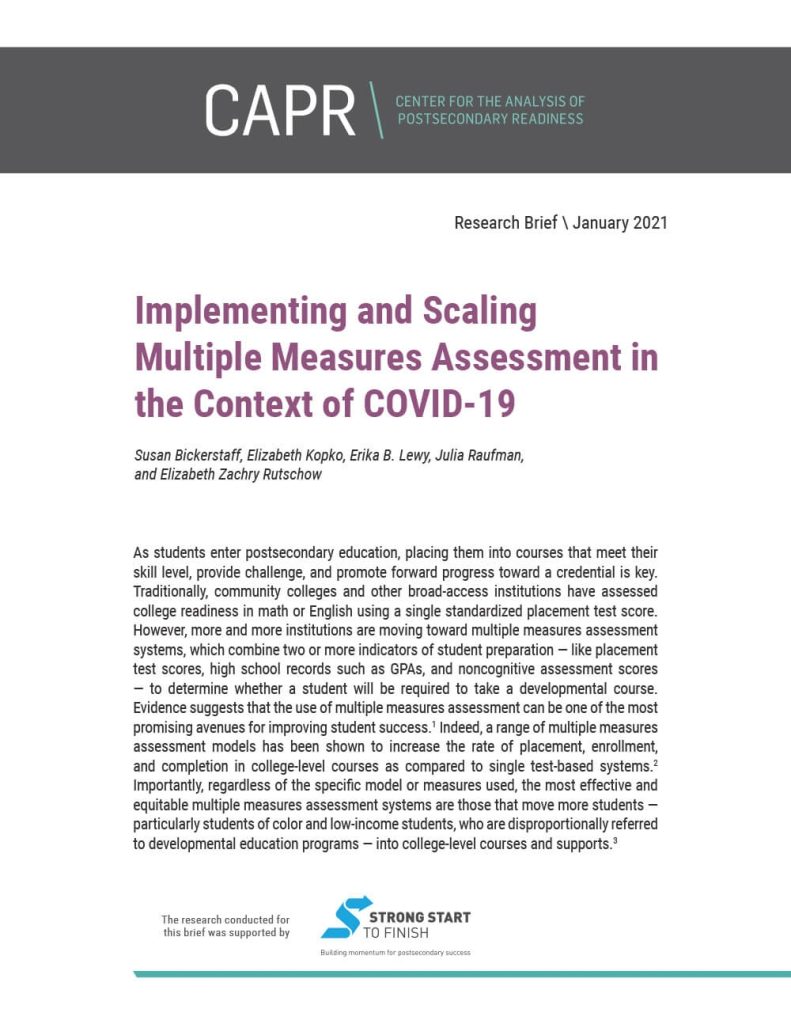
This brief discusses how community college systems in four states—Indiana, Virginia, Texas, and Washington—supported large-scale changes to student placement practices in reaction to challenges associated with the COVID pandemic.
